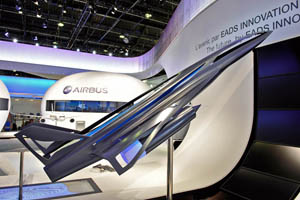The new Dreamliner jet from Boeing is aiming to be a game changer in the airline industry by introducing higher levels of fuel economy and embracing new technologies, such as more electric systems and advanced aerodynamics.
This past weekend, Boeing completed all flight tests required for type certification of the 787-8 Dreamliner with Rolls-Royce engines.
According to Boeing, the Dreamliner is destined to bring “unprecedented levels of fuel economy and environmental sensitivity”, as well as lowering costs, to the marketplace through the use of new technologies, including composites, more-electric systems, advanced aerodynamics and the latest advancements in propulsion.
Scott Fancher, vice-president and general manager of the 787 programme at Boeing, said today that the company was pleased with the performance of the aircraft during the testing phase over the past month.
“The Dreamliner continues to demonstrate that we will indeed deliver a truly revolutionary airplane that will be a game changer in the marketplace.”
The final flight of the Dreamliner happened last Saturday on board ZA102, the ninth 787 to be built.
Captain Mike Carriker, chief pilot for the 787 programme, brought the ZA102 back to its home base at Paine Field in Everett, Washington, at 1.58pm (Pacific time) following a 90-minute flight that originated in Billings, Montana.
During the flight, the 14-person crew completed simulations of a dispatch with a failed generator and failed fuel flow indication.
“When ZA102 returned to Paine Field, it brought back with it the hopes and dreams of the many thousands of men and women of Boeing and our global partners who have worked so long for this day,” Fancher said. “Their hard work and commitment to this amazing airplane has been a true inspiration. We look forward to making our first delivery to our good friends at ANA in September.”
At Boeing, flight testing continues for 787s with GE engines and for Boeing test points not related to certification.
The Boeing 787 Dreamliner features larger windows, cleaner air, higher humidity and a lower cabin altitude, according to the company.
The first delivery of a 787 Dreamliner was initially expected to happen in February until an electrical fire and power failure occurred on an aircraft during testing in November 2010.

The ZEHST concept plane unveiled by EADS at the Paris Air Show in June 2011
Clean-tech aircraft innovations in 2011
Earlier this month, Aeromexico flew more than 250 passengers in an 11-hour flight from Mexico City to Madrid on a biofuel-powered Boeing 777-200ER airplane, the first-ever commercial airplane to fly a transatlantic flight powered by biofuel.
In late June, KLM became the first airline in the world to operate a commercial flight on biokerosene. Flight KL1233, a Boeing 737-800, carried 171 passengers from Schipol in Amsterdam to Charles de Gaulle in Paris, operating on fuel produced from used cooking oil.
Aerospace group EADS revealed its concept ‘hypersonic’ jet at the Paris Air Show in June 2011. It predicts the jet could be flying long-haul routes by 2050 as a standard aircraft and running on clean fuels, such as biofuel and liquid hydrogen, as well as emitting less noise pollution.
Main photo: Boeing 787 Dreamliner in flight